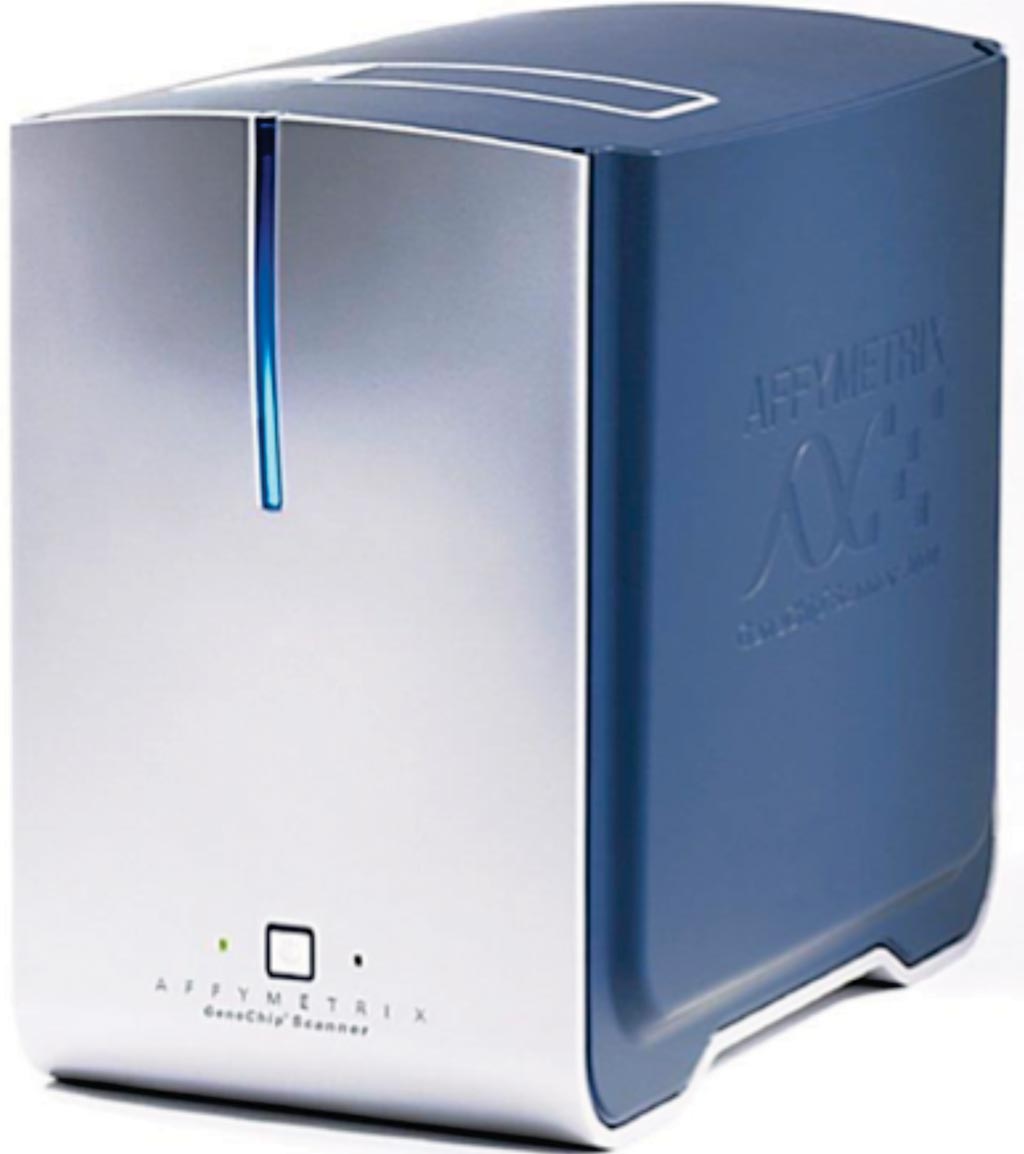MicroRNAs Provide Clues in Primary CNS Lymphoma
By LabMedica International staff writers
Posted on 20 Feb 2019
Primary central nervous system lymphoma (PCNSL), a rare subgroup of diffuse large B-cell lymphoma (DLBCL) arising in the central nervous system (CNS), is an aggressive malignant variant of nodal non-Hodgkin lymphoma (NHL).Posted on 20 Feb 2019
MicroRNAs (miRNAs) are small noncoding regulatory RNAs consisting of approximately 20-mer nucleotides, that inhibit gene function through suppression of translation of target genes. Many miRNAs are known to be potential biomarkers for diagnosis and prognosis in PCNSL. In addition, there are potential biomarker miRNAs for PCNSL in the cerebrospinal fluid and in the serum.

Image: The Affymetrix high-resolution microarray scanner 3000 (Photo courtesy of Thermo Fisher Scientific).
A team of scientists working with the Kyoto Prefectural University of Medicine (Kyoto, Japan) carried out a study on specimens from 27 PCNSL patients. The median age of the patients was 64 years (range, 31–76 years). Of the 27 patients, 14 patients were female (51.9%), and 13 patients were male (48.1%). The median survival time was 765 days.
Total RNA was extracted from each tumor tissue using Isogen. The quality of the extracted RNA was verified with a Bioanalyzer System using RNA Pico Chips. Approximately 1 μg of RNA, amplified twice, was used for hybridization with Affymetrix GeneChip miRNA Array, comprising of 30,424 probes.
After hybridization, the array chips for target detection were processed, washed, and stained using the Fluidics Station 450. The High-Resolution Microarray Scanner 3000 was used for scanning the signal, and the Affymetrix GCOS Workstation Version 1.3 was employed for image-quality analysis. Real-time quantitative polymerase chain reactions (RT-qPCRs) were performed using a StepOne Real-Time PCR System and TaqMan MicroRNA Assays.
The team analyzed 847 miRNAs expressed in 27 PCNSL specimens using microarray profiling and surveyed miRNA signature for prognostic prediction. Of these, 16 miRNAs were expressed in 27 PCNSL specimens at a frequency of 48%. Their variable importance measured by Random forest model revealed miR-192, miR-486, miR-28, miR-52, miR-181b, miR-194, miR-197, miR-93, miR-708, and let-7g as having positive effects; miR-29b-2*, miR-126, and miR-182 as having negative effects; and miR-18a*, miR-425, and miR-30d as neutral. The 16 miRNAs were enriched by gene ontology terms including angiogenesis, cell migration and proliferation, and apoptosis, in addition to signaling pathways including TGF-β/SMAD, Notch, TNF, and MAPKinase.
The authors concluded that although the data is limited by the small sample size and there is less evidence for the above-mentioned function and signaling pathways at present, it would help us to better understand biological significances of the CNS signature of miRNAs in PCNSL. The study was published on January 7, 2019, in the journal PLOS ONE.
Related Links:
Kyoto Prefectural University of Medicine













